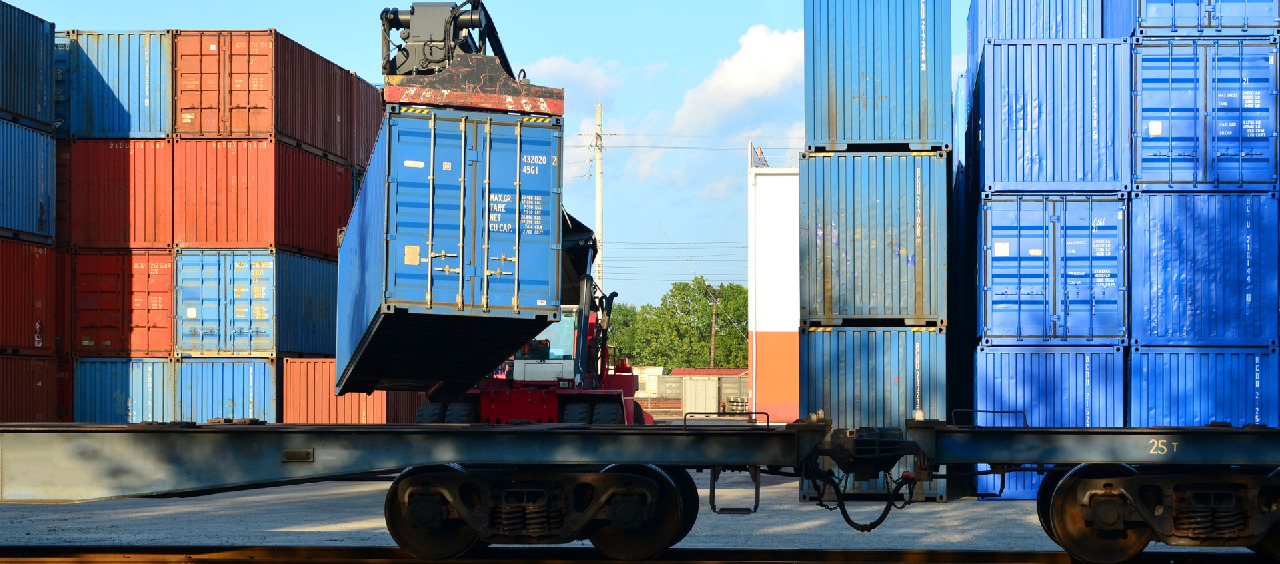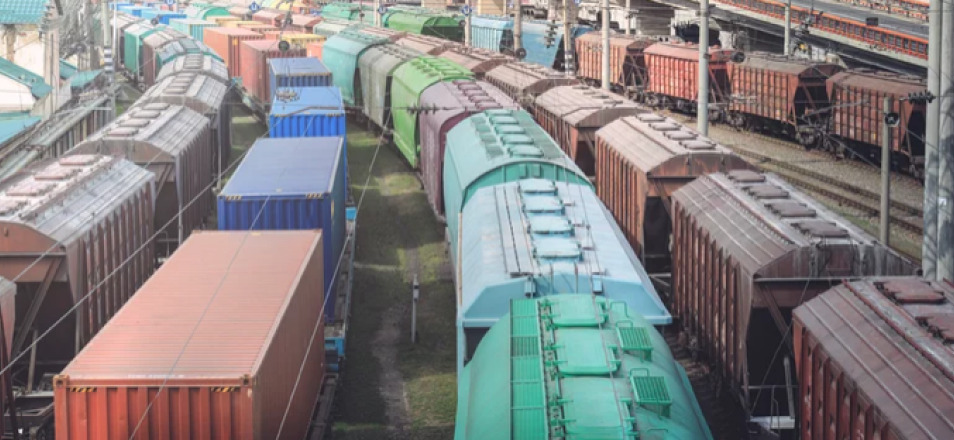Rail freight logistics is a critical component of the global supply chain, enabling businesses to move their products quickly and efficiently around the world. For companies looking to optimize their supply chain, understanding the rules and regulations of rail freight logistics is essential.
This definitive guide is designed to provide a comprehensive overview of the industry, from understanding the basics of freight rail to exploring the latest trends and technologies impacting rail freight. With insights from experienced industry professionals, you’ll gain an in-depth understanding of rail freight logistics to help you make informed decisions about your supply chain.

What is Rail Freight Logistics?
Rail freight logistics is the process of moving goods via rail, from the point of origin to the point of destination. Rail freight logistics is a highly complex industry, requiring the coordination of different departments and stakeholders, including shippers, logistics companies, and rail operators. Rail freight logistics requires all parties to work closely together to ensure a seamless and efficient journey for the goods being transported.
As such, rail freight logistics is a critical component of the global supply chain. It enables companies to move their products quickly and efficiently, linking the production and distribution stages of the supply chain. The end goal of rail freight logistics is to deliver goods to customers as quickly as possible so they can be used or sold as soon as possible.
The size of the rail freight industry is enormous: according to the International Union of Railways (UIC), rail freight accounted for 43% of international freight traffic in 2018. This equates to around 13 billion tonnes of freight being transported by rail every year.
The Benefits of Rail Freight Logistics
There are a number of benefits associated with rail freight logistics, including speed, efficiency, and cost-effectiveness. Rail freight is a highly efficient mode of transport, moving an average of 1 tonne of freight for every 1 liter of diesel consumed. This is significantly more efficient than road transport, which uses 10 liters of diesel for every tonne of freight moved.
Rail freight is also faster than other modes of transport, with an average transit time of 36 days from China to Europe. This compares to 58 days for seaborne freight and 39 days for overland trucks. Moreover, rail freight logistics has a significant environmental impact.
Compared to road freight, rail has significantly lower CO2 emissions, nitrogen emissions, and other harmful emissions. In fact, rail is the only mode of transport that can be used to decouple economic growth from emissions.

The Different Types of Rail Freight
Rail freight is a broad term that refers to any freight being transported via rail. However, there are two main types of rail freight – bulk and containerized. Bulk rail freight refers to commodities such as coal, minerals, oil, grains, and fertilizer, while containerized rail freight refers to finished goods such as cars, apparel, and electronics.
Bulk rail freight is often transported in large intermodal containers or in open-top wagons, while containerized rail freight is typically carried in standard ISO containers. Containers offer a number of advantages, including flexibility, ease of loading and unloading, and reduced damage compared to other rail freight.
Regulations and Standards for Rail Freight
Before discussing the latest trends in rail freight, it’s important to note that the rail freight industry is highly regulated. This is due to the large number of stakeholders involved in the process, including shippers, logistics providers, and rail operators. As such, there is a range of rules and standards that must be followed to ensure the safety of freight being transported by rail.
The main standard governing rail freight is the UIC’s Rules for the Construction of Wagon, Containers, and other Rolling Stock, also known as the Rolling Stock Standard (RSS). This is designed to ensure all stakeholders are adhering to the same safety and operational standards. RSS R34, for example, is designed to ensure the safe transport of dangerous goods.
The Latest Trends in Rail Freight Logistics
With the global demand for rail freight continuing to rise, there has been an increased focus on improving rail freight logistics. This has led to a number of innovations and new technologies being developed, designed to make the process more efficient.
– Big data and analytics: The rail industry is increasingly using big data and analytics to improve operational efficiency and rail network management. This includes collecting data on train movements, vehicle scheduling, and track use to identify potential bottlenecks and areas for improvement.
– Autonomous freight: The rail industry is also investing in autonomous freight technology to improve the efficiency and safety of rail freight. One example of this is the development of autonomous trains, which can be programmed to follow a particular route and schedule independently of human intervention.
– Blockchain technology: Blockchain is a digital technology designed to securely record and track transactions. As such, it has been identified as a potential solution to the challenges facing the rail freight industry, including data sharing, transparency, and data privacy issues.
The Impact of Technology on Rail Freight
Technology as a whole has had a significant impact on the rail freight industry. From improving operational efficiency to increasing transparency, there are many areas where technology can be implemented. New technology is expected to play an even bigger role in the future, with the rail industry predicted to double in size over the next 20 years.
With this in mind, it’s important for rail freight companies to focus on investing in the latest technologies. There are many areas where technology can be implemented to improve rail freight logistics.
For example, sensors and trackside technology can be used to monitor the condition of rail infrastructure and trackside conditions, identifying potential issues before they result in delays. This can be particularly useful in regions with harsh weather conditions, where maintenance can be challenging.
Strategies for Optimising Rail Freight Logistics
As the rail freight industry continues to grow, so does the need for shippers to optimize their rail freight logistics. To achieve this, it’s important to work closely with your logistics provider to understand the rules and regulations of rail freight, including the type of rail freight being transported, the route being used, and the loading and unloading requirements.
When selecting a rail freight provider, it’s important to select based on more than price. Instead, you should select a provider that can offer a full-service solution, enabling you to manage your end-to-end rail freight logistics.
This includes finding the right rail terminals with direct access to the rail network and arranging to truck if required. It’s also important to consider the future of the industry and how it may be impacted by new technologies. This will help you select a provider that will be able to keep pace with changes in the industry.
Challenges and Opportunities in Rail Freight
As the rail freight industry continues to grow, there are a number of opportunities and challenges facing shippers and rail freight providers. The main opportunities include the increasing demand for rail freight as a sustainable mode of transportation and the rise of e-commerce driving increased demand for cross-border freight.
Challenges facing the rail freight industry include pressure on rail capacity as a result of increased rail freight and the need to invest in the infrastructure to keep pace with demand.
Rail freight providers are also facing pressure to improve their sustainability credentials, with many rail companies increasingly focused on reducing emissions and becoming more environmentally friendly. To achieve this, they are investing in new technologies, including new rail car designs.
Tips for Working with Rail Freight Suppliers
When selecting a rail freight supplier, it’s important to work with a company that offers a full-service solution, is reliable, and has the expertise required to manage your rail freight logistics. This includes a deep understanding of the rules and regulations of rail freight, as well as operational best practices and standards.
You should also select a supplier that’s transparent, so you’re able to track the progress of your freight and know where it is at all times. Finally, you should select a supplier that can offer a competitive rate and meet your delivery requirements, whether this is a guaranteed service level agreement (SLA) or expedited delivery.
When selecting a rail freight supplier, it’s important to understand your needs and find a supplier that can provide a solution. However, it’s also important to remember that the best supplier isn’t always the cheapest supplier.
Conclusion
Rail freight logistics is a critical component of the global supply chain, enabling companies to move their products quickly and efficiently, linking the


